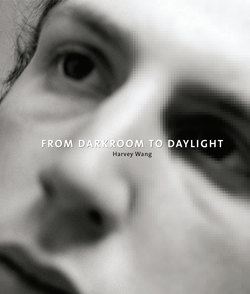Читать книгу From Darkroom to Daylight - Harvey Wang - Страница 5
На сайте Литреса книга снята с продажи.
ОглавлениеINTRODUCTION
I began taking pictures for real at the end of middle school. It was unusual to walk around with a camera in the Queens, New York, neighborhood where l lived, but from age 15, I was never without my Nikon camera. I would shoot black-and-white film and develop it in the basement darkroom of my house.
I loved the ritual of developing film and making prints: removing the exposed film from its metal canister, spooling the film onto reels in darkness, measuring the chemistry, and pouring each chemical into the developing tank. After the film was in the fixer, I could open the tank and see the negative images on the film for the first time.
When the film was dry, I’d cut the negatives into strips and make a contact sheet. The negatives were placed in an envelope, and a number was assigned to each envelope. The same number would be put on the corresponding contact sheet, and they were stored in boxes. Every year, a new box was added, and the contact sheets became a diary visually documenting my passage through the years.
For over 25 years, I exposed black-and-white film, developed it, and made contact sheets and prints.
I stopped adding to this multi-decade collection of sequential envelopes in about 2000, when I started to shoot more color, and eventually to shoot digital.
Some time later, I realized something had changed about my relationship to photography.
I wasn’t sure that the new ways of working suited me. I wondered if other photographers’ worlds were turned upside down when they stopped mixing chemicals and isolating themselves in the dark.
—Harvey Wang
This book is the product of my interviews with photographers and important figures in the field of photography conducted from 2008 to 2013. All the text in these pages is excerpted from those interviews and from correspondence that followed.
